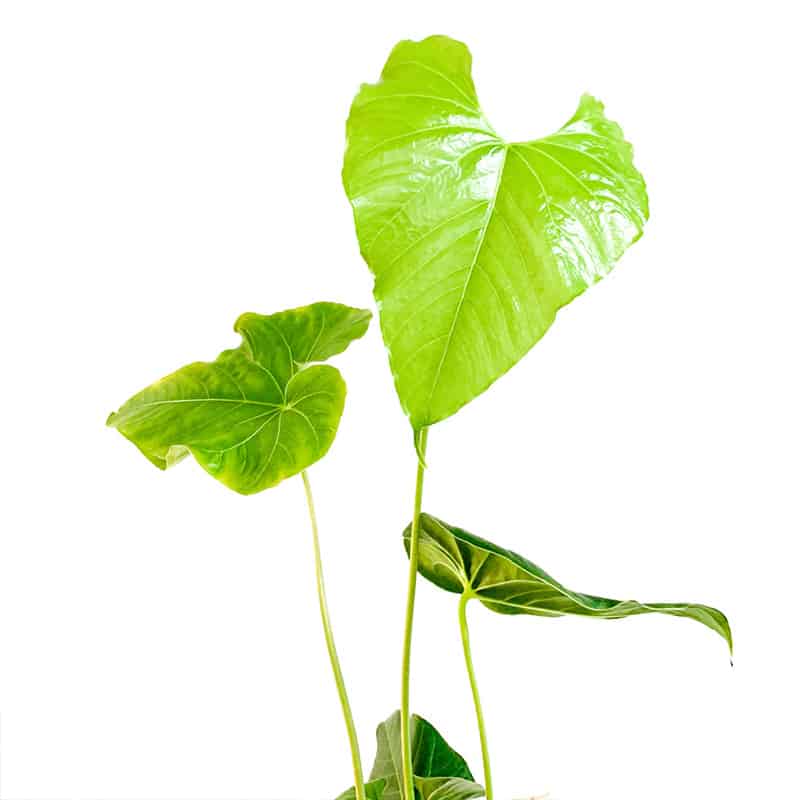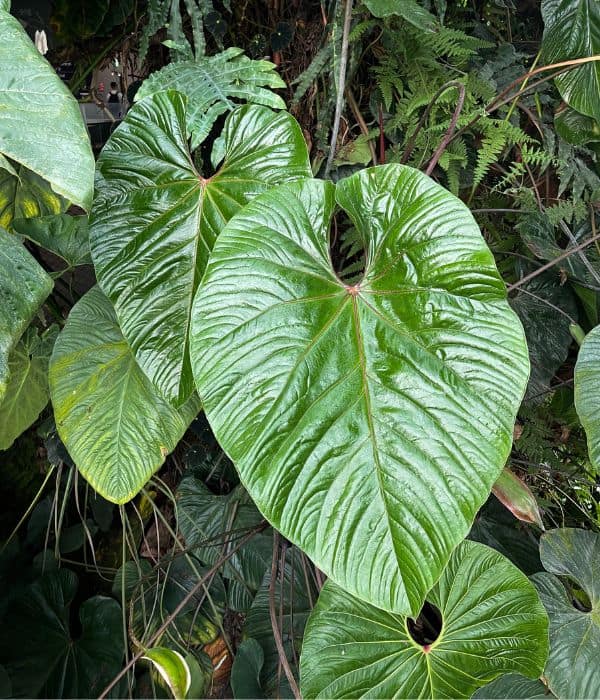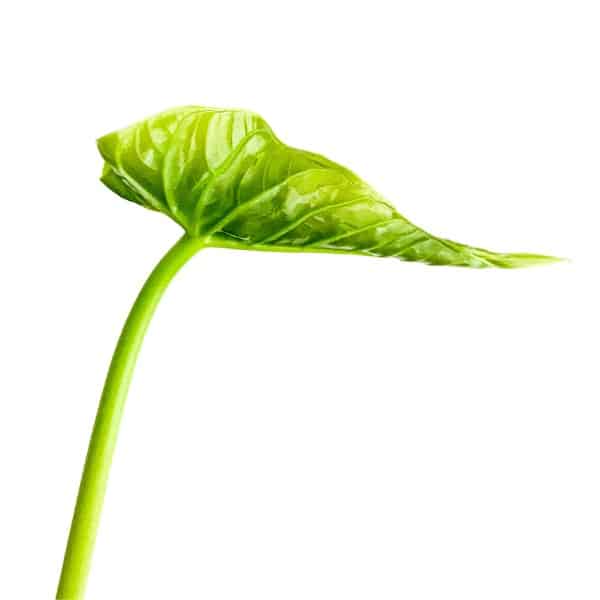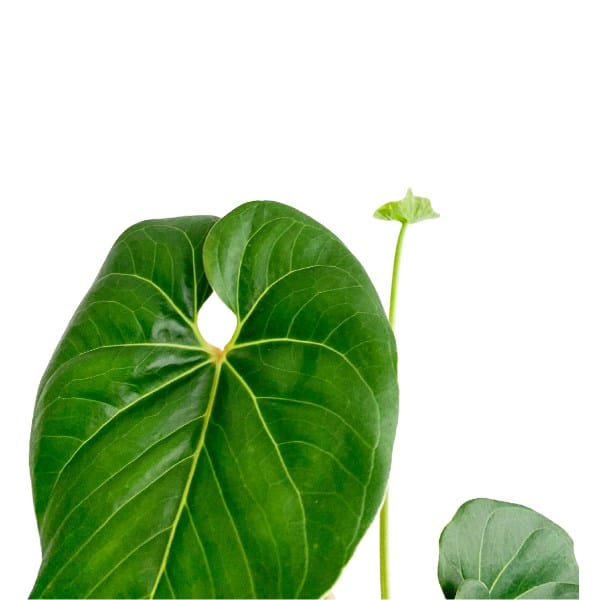Anthurium cupulispathum has one of the biggest leaves among all described anthurium species.
This stunning anthurium is renowned for its large foliage that can grow to over 5 feet in length. The sheer magnitude of the leaves makes it stand out in the undergrowth of the tropical rainforest.

ABOUT ANTHURIUM CUPULISPATHUM CROAT
Anthurium cupulispathum is a tropical plant in the Araceae family native to Ecuador and Colombia, where it is found on the western slopes of the Andes at elevations of 600-3300 meters. It is a terrestrial aroid.
Anthurium cupulispathum has heart-shaped leaves with slightly wavy margins on mature specimens. One of the distinctive characteristics of this large leaf aroid are red-tinted marks where the petiole attaches itself to the leaf blade and “fuzzy” persistent cataphyl fibers.
The petioles grow very tall, even on a juvenile plant.
The spadix is bright red and hanging downwards. On a mature specimen, it grows to massive sizes.
Anthurium cupulispathum is one of the largest-leafed Anthuriums, along with Anthurium metallicum, decipiens, and marmoratum. It is related to Anthurium giganteum.
Anthurium cupulispathum belongs to the Belolonchium section of the Anthurium genus. Another notable member of this section is Anthurium effusilobum.

CARE TIPS
I have not figured out the exact care for this anthurium species yet. The one plant I had, died on me, so I’m by no means an expert on the care for this species. But I hope that the brief care info below will help you avoid my debacle.
The emerging leaves are very brittle and can be easily torn and damaged so be careful with the plant when it pushes new leaves. Having said that, all leaves on my cupulispathum emerged unscathed in ambient humidity, proving that you don’t need high humidity to grow this aroid.
I had a juvenile plant that grew rapidly, pushing new leaves one after another. But at a certain point, the leaves turned brown, and the plant died. To this day, I don’t have a clear idea why. I suspect rust fungus, but I’m not positive.
I grew this anthurium in a regular aroid potting mix of orchid bark, coco chips, coco coir, perlite, and horticultural charcoal. It grew in ambient humidity (55%) at a steady temperature of around 25C. Regarding light requirements, it grew very well under grow lights until it outgrew my plant shelf. Afterwards, I placed it in bright indirect light close to a window. The petioles became a bit leggier without the grow light, but the plant didn’t suffer otherwise.
I will be getting another plant for sure as the leaves are stunning.
I highly doubt the plant will grow to its potential in indoor environment but I’ll be trying to prove otherwise with the next Anthurium cupulispathum I’m getting!
This large leaf anthurium species is not very sought after, unlike other velvet leaf anthuriums such as magnificum, forgetii, or warocqueanum, and the price reflects that. It is not very expensive compared to other anthurium species in high demand.

ANTHURIUM CUPULISPATHUM HYBRIDS
This anthurium species produces some of the more interesting hybrids. Here are the two I’ve heard about. It would be interesting to see if there is a hybrid made with Anthurium effusilobum since both species belong to the same Belolonchium section.
ANTHURIUM CUPULISPATHUM X PEDATUM
This anthurium hybrid looks spectacular. It takes the frilled, ‘fingered’ look after pedatum and large heart shape after cupulispathum. I haven’t seen this hybrid anywhere on sale but definitely worth getting if you have the opportunity.
ANTHURIUM CUPULISPATHUM X DECIPIENS

You may also be interested in these blogs:
Rare Anthurium Species You’ll Want to Grow
The Unrivaled Guide to Anthurium Effusilobum Care
Anthurium Lineolatum: A Stunning Aroid
Anthurium Bullatus, Pandurilaminum, or Bullatum? GET THE SCOOP

